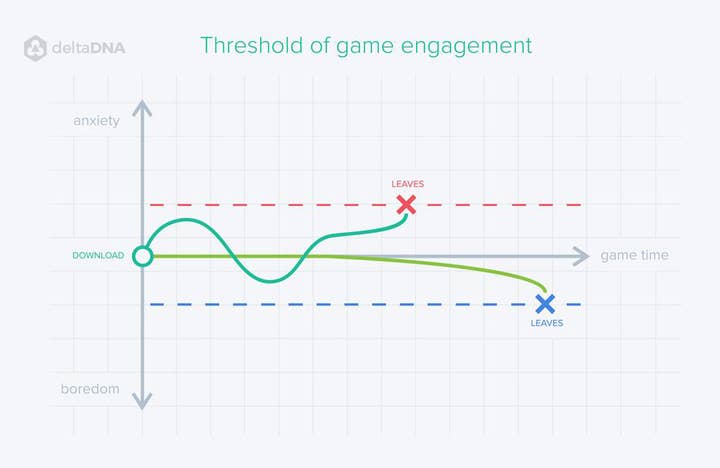Why successful F2P games need personalization
DeltaDNA on how to increase retention by customising your experience
It would be a wonderful scenario if everybody who played your game responded to it in the same way, everyone loved it and your job was done once you released it. In reality, all games have a broad spectrum of players reacting to challenges and rewards in their own way. Treating all players in the same way inevitably means that some will be disappointed with their experience. They'll leave the game and fail to monetize.
With a crowded marketplace and ever-increasing levels of competition, developers need to get serious about understanding their customers and responding to individual needs to keep them in the game. Game personalization is taking off as the effective way to maximize the potential of your title.
What is game personalization?
It would of course be very difficult, and prohibitively expensive, to design an individual experience for each of your players. Instead, personalization involves using segmentation to find groups of players who are similar and designing the game in such as way as to change itself for that group. At its core, it's based on the understanding that there is a threshold of engagement for all players - on a scale between boredom and anxiety. If players cross this threshold, it will cause them to leave the game. Developers need to keep each player segment within the threshold by adapting the gameplay.

The first advantage of treating your segments differently is that your players will enjoy your game more. A player whose experience is tailored to what they enjoy - whether that's fast gameplay, building up coins, tricky puzzles, or plenty of hints - will keep playing and is more likely to monetize. While it's not possible for every game to appeal to every audience, a fixed difficulty curve excludes a huge group of players who could love your game but are just a little too experienced (or inexperienced) for it.
Why player segmentation is essential in every F2P game
You might, for example, find a group of players who are novices and are struggling to move through the levels. They can be targeted with advice or bonuses, while other players might find the game easy and need the difficulty ramped-up. But segmentation isn't just about player skill - you'll often find a group who are using your game's social features much more frequently. You can target these players with offers to keep them sharing. A good thing to do when defining segments is to see if important metrics like Retention and Spender Fraction are different among different groups.

Segmenting players has huge benefits for monetization. Understanding what the big spenders in your game want and treating them properly can have big payoffs. You might also find groups who want to spend in different ways - for example, one segment might want to buy lots of grind currency, another lots of premium currency. Some segments are attracting new players to your game, while others will be happy to watch rewarded adverts all day long. You should be using personalization to augment their monetization experience, to maximize your revenues from all players.
How to maximize monetization using personalization
The principle here is the same as when looking at gameplay. In the example below, we've identified a segment of players as Grinders; players who decline opportunities to make an in-app purchase (IAP) but repeatedly return to play. You know they are unlikely to ever make an IAP, so this segment should be monetized with a mixture of rewarded and interstitial ads. In the same game, you could choose to protect payers by not showing them any ads at all. The most recent edition to the deltaDNA toolset, SmartAds, uses predictive modelling to show ads only to responsive players, protecting those who are more likely to make an IAP.

Make it happen in your game
The benefits of personalization are clear, so how do you go about applying this approach to your game? First of all, you will need to define what your segments will be. While you may have a very good idea about the different player groups in your game, you will need to make sure that these groups really are as similar as you think, and the only way to do this is to refer to your game data. A robust analytics tool, like DeltaDNA's game analytics & marketing platform, should be able to define segments and enable you to respond to them live in-game, changing the player's journey using automated campaigns and shifting the game's balance by providing additional resources or making obstacles tougher.
Balancing in-app purchasing and ad-serving with positive player experiences, using personalization tools, is the most effective way of ensuring your F2P game is successful. You need to take a holistic view of your entire game economy and think about your game from the player perspective.
This article was commissioned as promotional material by DeltaDNA and does not necessarily represent the views of GamesIndustry.biz.
